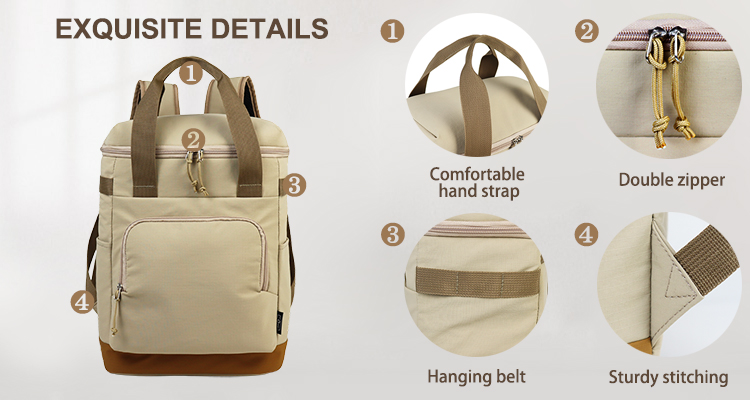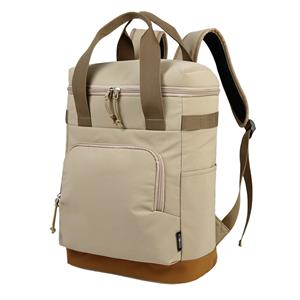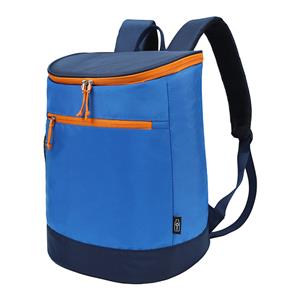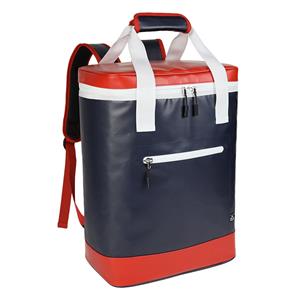- Corporate News
- Industry News
- Blog
- Product news
Modern cooler backpacks boast a range of design features
In the realm of outdoor gear and everyday essentials, cooler backpacks have emerged as indispensable tools. These innovative products seamlessly merge the functionality of traditional cooler bags with the convenience and hands - free operation of a backpack.

I. Design and Features
Modern cooler backpacks boast a range of design features that enhance their utility. The primary component is the insulated compartment. Most utilize high - performance insulation materials such as closed - cell foam. This type of foam creates an effective thermal barrier, significantly reducing the rate of heat transfer between the inside and outside environments. The thickness of the foam lining can vary, but generally, a higher - quality cooler backpack will have thicker insulation to maintain colder temperatures for longer durations.
The zippers on a cooler backpack are another critical design element. They are often made of durable materials and feature weather - resistant coatings. This prevents moisture from seeping into the insulated compartment, which could compromise the cooling performance and potentially damage the contents. Additionally, some cooler backpacks come with lockable zippers, providing an extra layer of security for valuable items being transported.
The backpack straps are ergonomically designed to distribute the weight of the contents evenly across the shoulders and back. Padding on the shoulder straps is essential for comfort, especially when carrying the backpack for extended periods. The back panel is also contoured and padded to prevent discomfort and to allow for some airflow, reducing sweating and fatigue during activities.
II. Capacity andVersatility
Cooler backpacks come in various capacities to suit different needs. Compact models with capacities ranging from 10 to 15 liters are ideal for individual use during short outdoor trips or daily commutes. These smaller backpacks can comfortably hold a few cans of beverages, a lunchbox, and some snacks. For group outings like family picnics or camping trips, larger cooler backpacks with capacities exceeding 30 liters are available. These can accommodate multiple containers of food, several liters of beverages, and even some ice packs to maintain the desired temperature.
The versatility of cooler backpacks extends beyond food and drinks. They can be used to transport temperature - sensitive medications, photography equipment that needs to be protected from extreme temperatures, or even delicate plants and flowers. The secure and insulated environment provided by the backpack ensures that these items remain in optimal condition during transit.
III. Usage Scenarios
For outdoor enthusiasts, a cooler backpack is a game - changer. When hiking through rugged terrains or exploring nature trails, having a cooler backpack means you can stay hydrated with cold water and enjoy fresh food whenever you take a break. It eliminates the need to carry multiple heavy bottles or worry about food spoilage. Similarly, for beachgoers, a cooler backpack is perfect for carrying snacks, drinks, and even a small lunch. The backpack straps make it easy to carry while walking along the shore or moving through sand, and the insulated compartment keeps everything cool despite the hot sun.
In urban settings, cooler backpacks have become popular among food delivery personnel and commuters. Delivery riders can use them to transport orders that require temperature control, ensuring that customers receive their food or drinks in the desired state. For commuters, a cooler backpack allows them to bring homemade meals and cold beverages to work, saving money and reducing the reliance on disposable packaging.
IV. Maintenance and Care
Proper maintenance of a cooler backpack is essential to prolong its lifespan and maintain its performance. After each use, it's advisable to clean the interior with a mild detergent and warm water. This removes any food residues or odors that may have accumulated. The exterior should also be wiped down to remove dirt and debris. When not in use for extended periods, the backpack should be stored in a cool, dry place with the zippers partially open to allow air circulation and prevent the growth of mold or mildew.
Regular checks of the insulation and zippers are necessary to ensure they remain intact. If any damage is noticed, such as tears in the insulation material or malfunctioning zippers, it's important to repair or replace the backpack promptly. Neglecting these issues can lead to a significant decrease in cooling efficiency.





